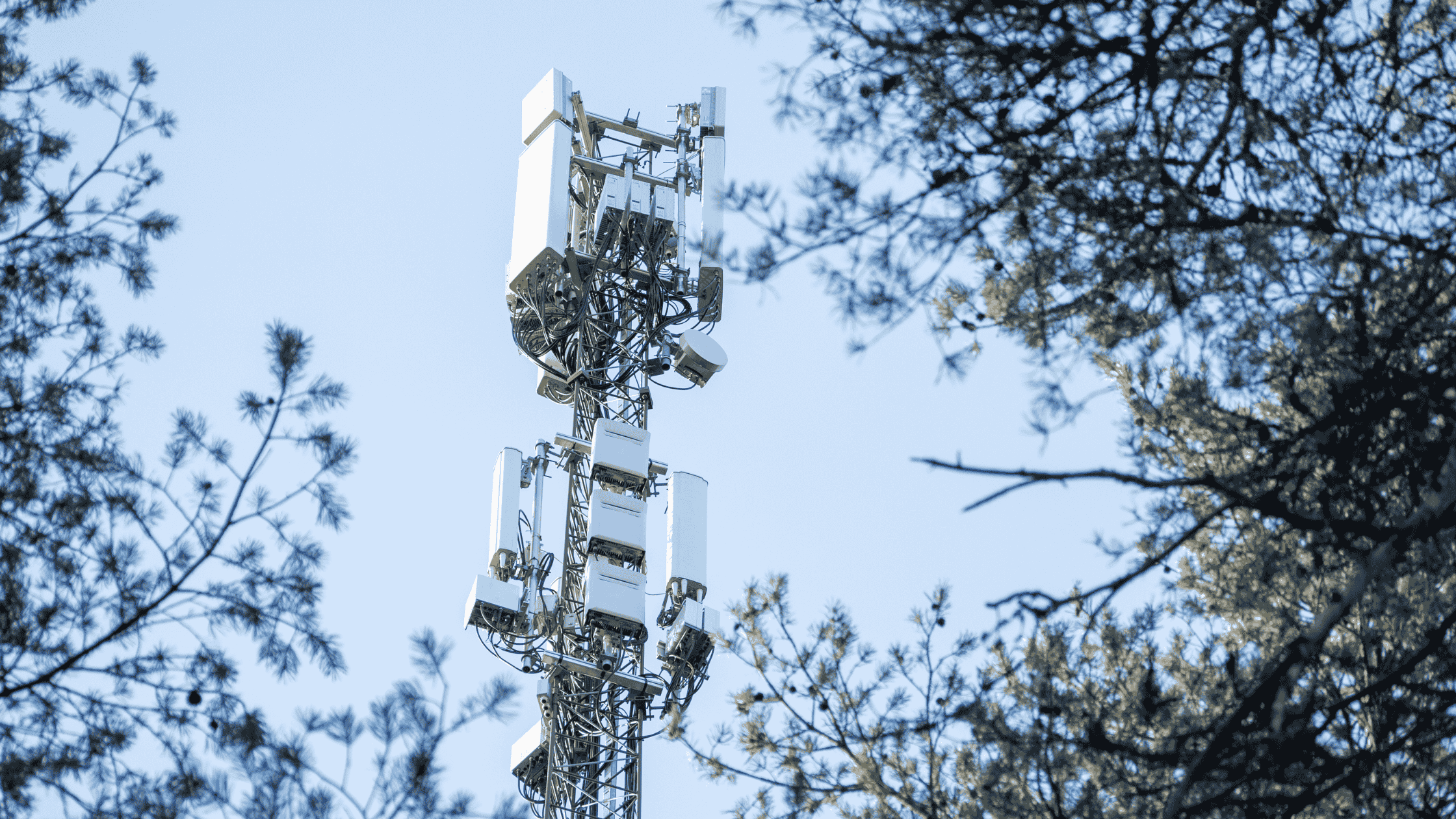
Confused about 5G vs 4G while RVing or working remotely? Here’s how to choose the right network for your travel style and internet needs.
When RVers compare 4G vs 5G for RV internet, they’re not just comparing speeds—they’re choosing the network that fits their lifestyle. 5G RV internet has become far more widespread, with the three major U.S. cellular carriers offering 5G coverage across most of the country. Still, 4G LTE coverage is a major player in the game, even in 2025.
Because coverage varies depending on geographic location, it’s critical for RV travelers and road-lifers to understand the difference between 4G and 5G speeds: 5G can be ten times faster than 4G—averaging 100–300 Mbps on mid-band, with peak rates up to 20 Gbps—while 4G LTE tends to deliver 20–50 Mbps, depending on network load. That means 5G RV internet offers lower latency and better capacity during data-heavy activities like video conferencing or streaming.
Of course, coverage varies: rural and remote camping spots often rely on 4G, while 5G can falter in certain regions. In the sections ahead, we’ll break down when 4G is still the smart choice for RVers, how much faster 5G RV internet can be in practice, and what to consider when upgrading your TravlFi device.
- Jeff Gwinnell, TravlFi connectivity specialist, reviewed this article for accuracy.

Speed
4G is pretty fast. It can download things like apps and videos pretty quickly, usually between 20 to 100 megabits per second (Mbps). But 5G is even faster. It can download stuff up to 10 gigabits per second (Gbps)! That means you can get things done on your phone or tablet way faster with 5G.
Latency
Latency is the time it takes for your device to talk to the internet and get a response. With 4G, there is a bit of a delay, usually around 30 to 50 milliseconds (ms). But 5G is much quicker. It can respond almost instantly, maybe just 1 ms! So, when you are playing online games or video chatting, there is less waiting with 5G.
Capacity
Think of capacity like how many people can fit in an elevator. 4G can handle a lot of devices being connected, but it might start to slow down if there are too many. 5G is like an even bigger elevator - it can handle way more people (or devices) without slowing down. This is great because we have lots of gadgets like smartwatches, smart TVs, and more that need to connect to the internet.
Which Is Right for You—4G or 5G?
Both 4G and 5G deliver strong performance for RVers and digital nomads, but the right choice depends on where and how you travel. 4G LTE remains highly reliable in rural areas and national parks, offering solid speeds for everyday tasks like navigation, email, and video streaming.
Meanwhile, 5G RV internet provides significantly faster speeds and lower latency, ideal for high-bandwidth activities like video conferencing, large file uploads, and gaming—especially if you travel through cities or well-covered suburban corridors.
TravlFi offers three device options to support different travel styles and connectivity needs:
- JourneyGo is a budget-friendly 4G LTE hotspot perfect for casual users or weekend RVers who just need reliable Wi-Fi for basic tasks.
- JourneyXTR provides enhanced antenna technology and multi-carrier roaming on 4G, making it a great fit for full-timers or travelers exploring off-grid areas.
- Journey Pro XTR 5G, our newest model, supports both 4G and 5G and is best for heavy data users who need future-ready performance across the country.
TravlFi’s SIM-free technology ensures that your device automatically connects to the strongest available signal from top U.S. carriers, so you can stay connected with confidence, whether you're deep in the mountains or parked in a bustling metropolis.
FAQ
Can I get 5G in my RV?
Yes—if you have a 5G-compatible hotspot like the TravlFi Journey Pro XTR 5G and you're in an area with 5G coverage. Most RVers can now access nationwide 5G from T-Mobile, AT&T, or Verizon, though availability varies by location. TravlFi devices automatically connect to the strongest available signal, so when 5G is present, your device can take advantage of its faster speeds and lower latency without needing to switch networks manually. Keep in mind that 5G performance is best in areas with strong mid-band or high-band signals, such as cities, major highways, and suburban zones.
Is 5G better than 4G for rural travel?
Not always. While 5G offers faster speeds and lower latency, 4G LTE remains more reliable in many rural and remote areas due to its broader, more mature coverage. In fact, low-band 5G often performs similarly to 4G in sparsely populated regions. That’s why TravlFi devices—especially the Journey Pro XTR 5G—are designed to prioritize the best available connection across both 4G and 5G networks, giving you consistent internet access whether you're near a cell tower or boondocking in the backcountry.

Article By: Amanda Capritto
Amanda Capritto is a fitness and outdoors journalist who travels full-time in a Winnebago camper van. Her work has appeared in national and global outlets like Lonely Planet, Reader's Digest, CleverHiker, CNET, and more.
